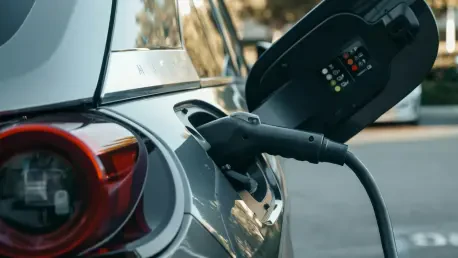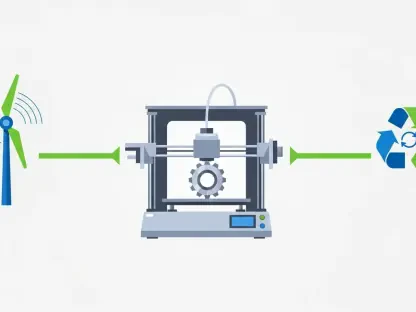In a bold move to recapture the attention of electric vehicle (EV) enthusiasts, General Motors (GM) is bringing back the Chevrolet Bolt for a limited production run starting in 2027, with shipments to dealerships kicking off in January of that year. This decision comes after years of production challenges, including battery recalls, and a pause that left many fans of the affordable EV disappointed. Now, as the market for electric vehicles grows increasingly competitive, GM aims to leverage the Bolt’s legacy of accessibility and innovation to meet rising consumer demand. With a starting price of just under $30,000, the revamped Bolt could be a game-changer for budget-conscious buyers. Yet, with EV tax credits set to expire by September 30, 2027, and uncertainties surrounding production volume, questions remain about whether this revival can truly ignite fresh interest in a crowded and evolving landscape of electric mobility.
GM’s Strategy Behind the Bolt Revival
Why Bring Back the Bolt?
GM’s decision to resurrect the Chevrolet Bolt stems from a groundswell of consumer feedback following the announcement of its discontinuation a few years back. Many loyal customers expressed frustration over losing an EV that combined practicality with a price point accessible to the average buyer. Recognizing this sentiment, GM saw an opportunity to reinforce Chevrolet’s reputation for delivering value-driven vehicles. Affordability remains a cornerstone of the brand’s identity, and the Bolt’s return is a strategic nod to maintaining a foothold in the entry-level EV segment. At a time when many automakers are focusing on premium electric models, GM’s emphasis on keeping costs low could resonate with a broad audience seeking sustainable transportation without breaking the bank. This move also signals a response to the growing call for greener options that don’t require a hefty investment, potentially positioning the Bolt as a key player in expanding EV adoption.
Beyond consumer demand, the Bolt’s revival aligns with GM’s broader goal of staying relevant in a rapidly shifting automotive landscape. The company has faced criticism for inconsistent EV strategies in recent years, with some models failing to meet sales expectations. Bringing back a proven name like the Bolt offers a chance to rebuild trust and demonstrate a commitment to meeting market needs. This limited run, while not a full-scale relaunch, serves as a calculated step to test the waters and gauge interest before committing to larger production volumes. Additionally, it provides GM with a platform to showcase how lessons from past setbacks, such as battery issues, have been addressed. By prioritizing affordability and leveraging the Bolt’s established fan base, GM hopes to carve out a niche in a market where price often dictates purchasing decisions, especially as financial incentives for EVs become less certain by 2027.
Limited Run Uncertainties
The term “limited run” attached to the Bolt’s 2027 comeback has sparked curiosity and concern among industry watchers, as GM has yet to clarify what this means in terms of production numbers or duration. This ambiguity suggests a cautious approach, possibly driven by the need to balance investment with unpredictable demand in a tougher market environment. Starting production with just a single shift at the Fairfax Assembly plant in Kansas City, Kansas, indicates a conservative stance, minimizing risk while assessing consumer response. Such a strategy might protect GM from overproduction but could also frustrate buyers if supply fails to meet interest. The lack of transparency around the scope of this run raises questions about whether the Bolt will be a fleeting return or a stepping stone to a more permanent presence in the lineup, leaving potential customers and analysts alike eager for clearer details.
Compounding these uncertainties is GM’s decision to place 900 workers on indefinite layoff at the Fairfax Assembly plant, a move that underscores the company’s hesitance to fully commit to large-scale EV production at this facility. This cautious scaling reflects broader challenges within GM’s manufacturing strategy, as other plants like Orion Assembly shift focus to gas-powered vehicles such as the Cadillac Escalade and Chevrolet Silverado. The limited production approach at Fairfax suggests that GM is hedging its bets, possibly due to disappointing sales in other EV categories or lingering doubts about market readiness for a flood of new Bolts. While this strategy may safeguard resources, it risks alienating a workforce and could signal to consumers that GM’s dedication to the EV transition is less robust than promised, potentially impacting the Bolt’s reception in 2027.
Technological Advancements and Challenges
Upgrades in the New Bolt
The 2027 Chevrolet Bolt isn’t merely a rehash of its predecessor; it arrives with significant technological enhancements that aim to elevate its appeal in a competitive EV market. Central to these upgrades is GM’s proprietary Ultium propulsion system, which aligns the Bolt with newer models like the GMC Hummer and Cadillac Lyriq, ensuring it benefits from cutting-edge electric architecture. The vehicle boasts a 210-horsepower motor, shared with the Chevrolet Equinox EV, and delivers a GM-estimated range of 255 miles powered by a 65-kilowatt-hour battery. These specs represent a notable leap forward, offering improved performance and efficiency compared to earlier iterations. Such advancements position the Bolt as a compelling option for buyers seeking modern EV capabilities without a premium price tag, potentially drawing in a new wave of eco-conscious drivers by 2027.
In addition to powertrain improvements, the Bolt incorporates GM’s advanced driver assist system, SuperCruise, as a standard feature across both the LT and RS trims. This inclusion of semi-autonomous driving technology marks a significant step up, providing added safety and convenience that rivals often reserve for higher-end models. Despite retaining a front-wheel-drive setup and a design reminiscent of the previous Electric Utility Vehicle (EUV) version, over 50% of the Bolt’s components are new or modified, reflecting a thoughtful refresh rather than a complete overhaul. This balance of innovation and familiarity could appeal to returning customers while enticing first-time EV buyers. However, whether these upgrades will be enough to stand out in a field of increasingly sophisticated competitors remains a critical question as the Bolt prepares to re-enter the market in just a couple of years.
Battery Sourcing Issues
One of the more pressing challenges facing the Bolt’s revival is GM’s temporary reliance on imported batteries, reportedly sourced from a Chinese supplier, as a stopgap until domestic production ramps up. While the specific partner hasn’t been officially confirmed, industry reports point to CATL, a leading global battery manufacturer. This decision highlights the broader supply chain complexities that automakers face in scaling EV production, particularly when striving to keep costs low. Using foreign batteries may help GM meet immediate needs for the 2027 launch, but it raises concerns about long-term cost efficiency and compliance with regulatory standards that often favor localized manufacturing. For consumers, this could translate to questions about quality consistency and the environmental footprint of sourcing components from overseas, potentially impacting the Bolt’s eco-friendly appeal.
To address these concerns, GM is working toward transitioning to domestically produced lithium iron phosphate (LFP) batteries in partnership with LG Energy Solution, a South Korean firm. LFP technology promises lower costs and enhanced safety compared to traditional lithium-ion batteries, which could further solidify the Bolt’s position as an affordable EV leader. However, this shift is not immediate, and the interim dependence on imported units underscores the logistical hurdles of building a self-sufficient EV supply chain. As GM navigates this transition, the success of the Bolt may hinge on how quickly and effectively it can localize battery production without compromising on price or quality. This challenge mirrors industry-wide struggles to balance innovation with practicality, and the outcome will likely influence consumer confidence in GM’s commitment to sustainable, accessible electric vehicles by 2027.
Market Dynamics and Consumer Impact
Historical Success vs. Current Challenges
The Chevrolet Bolt has a storied history of market success, with global sales peaking at 79,000 units in 2023, including 62,000 in the United States alone, marking its strongest performance to date. This achievement cemented the Bolt as a standout in GM’s EV portfolio, appealing to buyers with its blend of range, reliability, and affordability at a time when electric options were scarce in the sub-$30,000 bracket. The vehicle’s ability to attract price-sensitive consumers made it a benchmark for accessible green technology, often outpacing competitors in its segment. This legacy provides a strong foundation for the 2027 revival, as many buyers still associate the Bolt with value and practicality, a reputation GM hopes to capitalize on as it reintroduces the model to a new generation of EV adopters eager for budget-friendly alternatives.
However, the market awaiting the Bolt in 2027 presents far greater challenges than in its heyday, with the expiration of EV tax credits on September 30 of that year posing a significant hurdle. These incentives have historically played a crucial role in driving sales for the Bolt, particularly among cost-conscious consumers who relied on government support to offset purchase costs. Without this financial boost, GM faces the daunting task of convincing buyers that the Bolt’s starting price of $29,990 remains a bargain in a landscape where competitors may offer similar pricing or enhanced features. Additionally, broader economic uncertainties and shifting consumer priorities could dampen enthusiasm, making it critical for GM to differentiate the Bolt through marketing and performance. The contrast between past triumphs and current obstacles highlights the uphill battle ahead for this iconic EV.
Can Affordability Drive Demand?
Industry analysts, including Stephanie Brinley from S&P Global Mobility, remain optimistic about the Bolt’s potential to attract buyers in 2027, citing its competitive pricing as a key advantage in a market with few affordable EV options. Starting at $29,990 for the LT comfort package and scaling up to $35,685 for the RS trim with a tech sunroof, the Bolt undercuts many rivals, appealing to those hesitant to invest heavily in electric technology. This price point could be particularly impactful for first-time EV buyers or families seeking a second vehicle with lower operating costs. Brinley suggests that the Bolt’s established name recognition, combined with upgraded features, might sustain its popularity despite a tougher market. If GM can effectively communicate the value proposition, the Bolt could carve out a significant share among price-driven consumers.
Yet, the absence of EV tax credits by late 2027 casts a shadow over these predictions, as affordability alone may not suffice to drive demand without external incentives. Historically, the Bolt’s core demographic has leaned on such financial support to justify the upfront cost, even with long-term savings on fuel and maintenance. Without this cushion, GM must rely on the vehicle’s intrinsic merits—range, technology, and design—to close the deal. Competitors may also intensify pressure by offering comparable pricing or bundling additional perks, forcing GM to innovate beyond cost. The question remains whether the Bolt’s sticker price and enhancements can outweigh the loss of subsidies, especially as consumer expectations for EVs grow more sophisticated. This dynamic will test the limits of affordability as a standalone selling point in a post-incentive era.
GM’s Broader EV Vision
Bolt’s Role in EV Sales
Within Chevrolet’s lineup, the Bolt, alongside the Equinox EV, is poised to be a primary driver of EV sales volume in the coming years, according to GM spokesman Chad Lyons. These models are strategically positioned to target different segments of the market, with the Bolt focusing on entry-level buyers and the Equinox EV appealing to those seeking a bit more utility and style. This dual approach aims to maximize GM’s reach across diverse consumer preferences, ensuring a robust presence in the EV space. The Bolt’s revival, even as a limited run, underscores its importance as a gateway vehicle that introduces buyers to electric driving without a steep financial barrier. If successful, it could pave the way for increased investment in affordable EV development, strengthening Chevrolet’s foothold as a leader in accessible electric mobility.
However, the Bolt’s role comes with caveats, as GM grapples with underwhelming performance in other EV categories, such as full-size electric pickups, which have failed to meet sales targets. This has prompted production shifts at facilities like Orion Assembly, redirecting focus to traditional gas-powered models. Such adaptations reflect a pragmatic response to market realities, but they also highlight the pressure on models like the Bolt to deliver results. If the limited run in 2027 proves successful, it could bolster confidence in GM’s EV strategy, encouraging bolder commitments to electrification. Conversely, lackluster sales might reinforce a cautious stance, limiting future innovation. The Bolt’s performance will thus serve as a critical indicator of whether GM can balance volume-driven models with broader ambitions in the electric arena.
Industry Trends and Future Outlook
The Bolt’s comeback unfolds against a backdrop of significant industry trends, including persistent supply chain logistics challenges that continue to hamper EV production across automakers. From battery sourcing to component shortages, these issues affect cost structures and delivery timelines, posing risks to GM’s ability to scale the Bolt efficiently. Additionally, regulatory shifts, such as the impending loss of EV tax credits, alter the financial calculus for buyers, potentially slowing adoption rates among price-sensitive demographics. These external pressures mirror a broader transition in the EV sector, where manufacturers must navigate a complex web of innovation, affordability, and policy changes. For GM, aligning the Bolt’s rollout with these dynamics will be crucial to maintaining competitiveness in a market that rewards adaptability and foresight.
Looking ahead, the Bolt’s limited run in 2027 serves as a litmus test for GM’s long-term commitment to accessible electric mobility, particularly as consumer expectations evolve. Success could validate the focus on affordability, prompting expanded production or new budget-friendly models to capture untapped demand. Conversely, struggles might push GM to reevaluate its EV priorities, possibly shifting resources to premium or niche segments. Industry observers note that the broader push for sustainable transportation hinges on making EVs viable for the masses, a goal the Bolt embodies. As GM refines its approach amidst supply chain hurdles and regulatory uncertainty, the lessons learned from this revival will likely shape strategies for years to come, influencing how the company positions itself in the future of electric driving.









